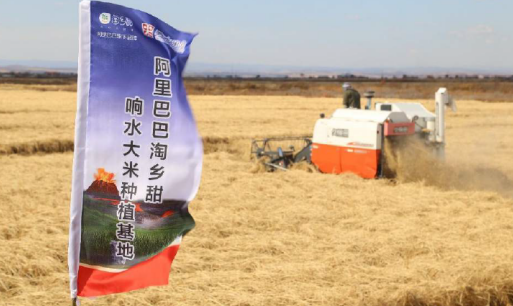I. Engineering Practices and Achievements
1) Rural Broadband Network Project
In 2014, the Chinese government implemented a rural broadband project to promote universal telecommunications services in rural areas and to improve the conditions of rural internet infrastructure.
As of the end of 2017, the broadband network (BBN) covered 96% of China's administrative villages, and the number of mobile phones per 100 households exceeded 300.
2) Agricultural Internet of Things (IoT) Regional Test Project
In 2013, the agricultural Internet of Things (IoT) regional pilot projects were carried out in nine provinces and cities such as Tianjin, Shanghai, and others. In 2014, the National IoT Application Demonstration for Intelligent Agriculture Project was launched. The National Agricultural Internet of Things Regional Pilot Demonstration Project was organized and implemented in eight provinces. It was applied in the areas of field planting, remote monitoring, remote diagnosis of pests and diseases, and precision operation of agricultural machinery. It summarized and promoted 426 cost-effective IoT software and hardware products and technology models for use in agriculture.
3) Digital Agriculture Construction Pilot Project
In 2017, the pilot project of digital agriculture construction was launched. The first agricultural high-resolution satellite was successfully launched in June 2018, which will be utilized for crop growth monitoring, crop rotation and fallow, plant protection, and agricultural machinery operations, thus offering precision support to the rural revitalization strategy.
4) Big Data for Agricultural Monitoring and Early Warning Project
Agricultural big data is promoting the continuous transformation of the current thinking and working paradigms in agricultural monitoring and early warning work.
Promoting the full integration of big data and agricultural industries as well as deepening the innovative application of big data in agricultural production, operation, management, and services will inject new vitality and provide new impetus to China's agricultural modernization.
II. Revolutionary Changes in Agriculture: IoT Application
IoT application catalysts included:
- Increasing the labour productivity from 3.33 to 33.3 hectares per person;
- Reducing the cost of irrigation by 44.63 US dollars per hectare;
- Saving fertilizer at a rate of more than 10% per 0.067 hectare, and creating cost savings of 44.63 US dollars per hectare;
- Increasing comprehensive benefits by 692.24 US dollars per hectare.

1) IoT applied in facility and protected horticulture
- Intelligent monitoring system in edible mushroom factories
● Reducing labour intensity by 50% and edible fungi bacteria infection rate by 5%;
● Increasing yield by 10% and increasing product quality.
- Intelligent control system in plant factories
● Shortening the cultivation period of leaf lettuce from planting to harvesting by 16 to 18 days, which is 40% shorter than the conventional cultivation cycle;
● Increasing the yield per unit area to more than 25 times that of open field cultivation.
- IoT production control system in blueberry cultivation
● Increasing the utilization coefficient of irrigation water from 0.50 to over 0.95;
● Saving irrigation water, cultivated land, power supply, and labourers.
2) IoT applied in livestock farming
- Environment monitoring and automatic feeding system in pig feed
● Increasing the per capita feeding amount from 400 to 1200 per labourer;
● Increasing the pig survival rate from 95.6% to 96.8%;
● Increasing the price of pigs by one third through the use of the platform.
- Precision health and culture technology service platform for dairy cattle
● Cost savings of 1 yuan per cow by using the feeding monitoring system, which is equivalent to 3.65 million yuan a year per 10,000 cattle in savings.
- Pig management network
● Realizing the function of helping farmers to manage pig farms;
● Combining the five parts of pig farms, financial institutions, slaughterhouses, middlemen, and manufacturers to form a closed loop;
● Improving economic benefits.
3) IoT applied in aquaculture
- Aquaculture IoT system in Jingzhou, Hubei Province
● Online real-time monitoring of the breeding environment;
● Achieving high efficiency and high output;
● Achieving controlled traceability of the whole farming process;
● Reducing labour costs by 1.38 million yuan.
- "Intelligent Crab" in Yixing, Jiangsu Province
● Covering 50,000 mu (approx. 33 square km), serving more than 1,000 households;
● Realizing intelligent monitoring of water quality and feed decision-making;
● The rate of survival crab seedlings and the yield per mu increased by 10%-15%.
Related Links:
1. Government Support for Village Informatization
http://www.wfpchinacoe.net/2022-09/07/content_78401975.shtml
2. Stories of Rural E-commerce Fostering Grassroots Entrepreneurs
http://www.wfpchinacoe.net/2022-09/07/content_78402054.shtml
3. A New Online Business Model in Rural Areas –Taobao Village
http://www.wfpchinacoe.net/2022-09/07/content_78402133.shtml
Source:
Success Stories of E-commerce—Experience from China
http://www.wfpchinacoe.net/2021-04/01/content_78109422.shtml
For more information, please contact WFP China COE (wfpcn.coe@wfp.org)
Category
Practices of Agricultural and Rural Informatization in China
Contributor
Practices of Agricultural and Rural Informatization in China
Country
Case Study

